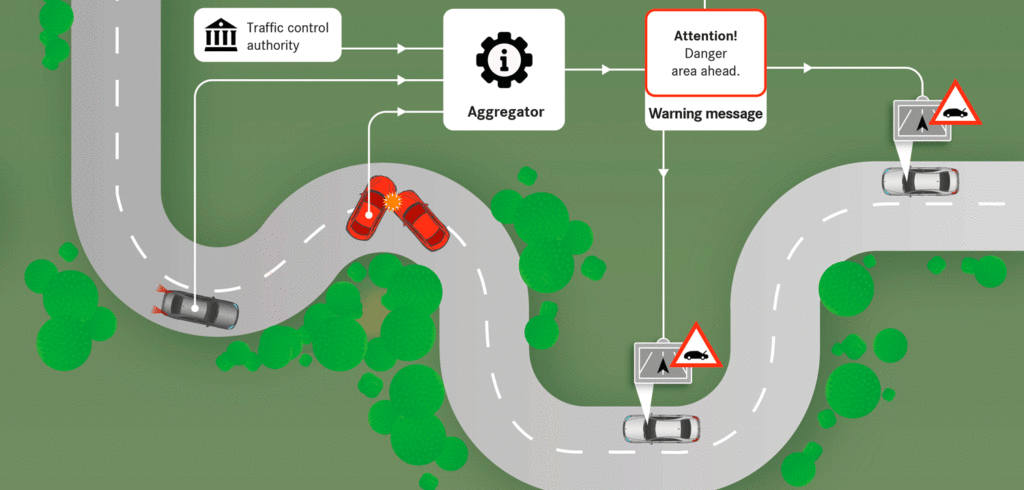Daimler, BMW, Ford and Volvo are testing how information about acutely hazardous situations can be passed on using car-to-X technology.
The vehicle manufacturers are working in cooperation with Here Technologies, Tom Tom and transportation authorities from Spain, Finland, Luxembourg, the Netherlands and Sweden on the project, which is scheduled to last 12 months, and will begin in the Netherlands.
Daimler has used mobile networking technologies to send hazard warnings from vehicle-to-vehicle (car-to-car) since 2013. For the first time, the OEMs and navigation service providers are now working on a joint, non manufacturer-specific and EU-wide solution. The aim of the project is to conduct research into the technical, economic and legal aspects of car-to-X.
Sajjad Khan, executive vice president and member of the board, Mercedes-Benz, CASE, commented, “Car-to-X communication has the potential to significantly improve safety on roads. With this project we are taking previous approaches to a new level: for the first time we have numerous highly capable and effective partners on board, so that warning messages can reach a large number of road users practically in real time.”
The project will also focus on safety-related traffic information (SRTI) across the EU, with the partners supporting the EU Commission in its efforts to promote the development of networked and intelligent transportation systems.
The researchers will also assess non technology-specific testing and further develop information flow using Car-to-X technology. Mobile radio-based communication systems will be used in the pilot project.
Furthermore it will evaluate data compatibility and cloud-based data processing. At first, the companies taking part will use the currently installed communication technologies and file formats, and where necessary develop and harmonize them further.
Data security will have top priority at all times. Information will only be passed within a closed ecosystem. Daimler will use the test fleet; no customer data will be used.
In addition, all data from the test vehicles will be sent in anonymized form: each message will only contain information about the incident and a time stamp, no reference will be made to the transmitter vehicle.


